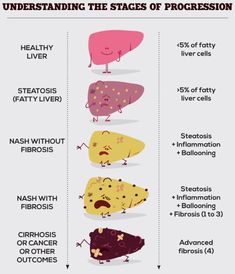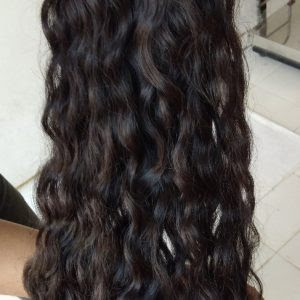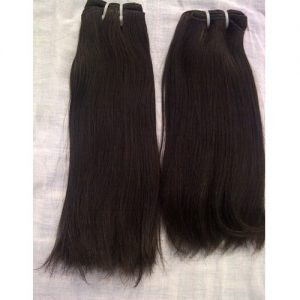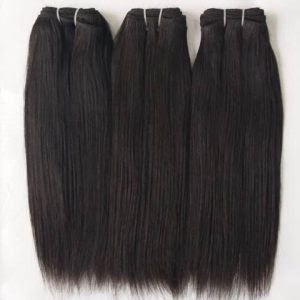What is Nomenclature for Medical Devices?
The nomenclature of medical devices is a coding and naming
system used to generically classify and identify all medical devices and
related health products. According to different classification and nomenclature
systems, there are between 5,000 to 24,000 different types of medical devices.
They range from the very simple to complex, inexpensive to costly. The number and types of devices are
increasing exponentially.
Which characteristics are required for a standardized nomenclature
for medical devices?
Countries and other stakeholders need a globally accessible,
transparent and harmonized nomenclature system for medical devices.
WHO recognizes the availability of multiple systems and
offers a platform towards convergence. The lack of such a system is impeding
progress towards access to medical devices, which has an negative impact on
efforts to facilitate emergency interventions and, more broadly, achieve
universal health coverage.
What do you understand by ‘medical devices’?
Medical devices include all types of health technologies
(except for vaccines and medicines) required for prevention, diagnosis,
treatment, monitoring, rehabilitation and palliation. These are indispensable
for universal health coverage, monitoring well being and addressing outbreaks or
emergencies.
Some types of medical devices include:
|
Types of Medical
Devices
|
Examples of Medical
Devices
|
|
Single Use Devices
|
Syringes, Catheters
|
|
Implantable
|
Hip Prothesis, Pacemakers
|
|
Imaging
|
Ultrasound and CT scanners
|
|
Medical Equipment
|
Anesthesia Machines, Patient Monitors, Hemodialysis Machines
|
|
Software
|
Computer Aided Diagnostics
|
|
In vitro Diagnostics
|
Glucometer, HIV Tests
|
|
Personal Protective Equipment
|
Mask, Gowns, Gloves
|
|
Surgical and Laboratory Instruments
|
Scissors, Knives, etc
|
Why is there a need for a standardized nomenclature for
medical devices?
The multiple nomenclatures in existence makes it difficult to
communicate important information between individuals and organizations, which
can result in health, economic and social impact. It complicates procurement,
supply and trade, and tracking of medical devices.
Some important information negatively impacted by an absence
of a standardized nomenclature include:
- Patient safety
- Intended use of
medical devices
- Regulatory status
- Technical
information
- Adverse events
- Availability
- Others
A standardized classification and nomenclature of medical
devices will serve as a common language for recording and reporting medical
devices across the whole health system at all levels of health care, and for a
whole range of uses. Hence, the WHO is working towards a globally accessible,
transparent and harmonized nomenclature
system.
Standardization of naming medical devices is also essential for:
- Streamlining
procurement
- Grouping and
evaluating innovative technologies
- Classifying for
regulatory approval (registration)
- Supporting device
descriptions for universal health coverage benefits packages
- Ordering and
grouping of devices in electronic health records and other health information
systems
What is WHO and nomenclature for medical devices?
Several systems exist today to name and classify medical
devices. Each system is used by a different group of professionals depending on
the needs of that group. Such needs include:
- Regulatory approval
- Procurement and supply
- Customs operation
- Inventories and maintenance, among others
Some countries and organizations have developed their own
national systems that are not compatible across systems.
Refer Also|: Syringes and Needles FAQ
In 2010 and 2017 WHO conducted surveys asking about
Nomenclature systems. As many as 174 countries responded. About half of the responding member states
(52%, n=90), use at least one official nomenclature system for medical devices.
In contrast, 84 member states did not have any official national nomenclature
(49%). More information can be found in the Global Atlas of Medical Devices
(2017). This Atlas is currently being updated (2021).
The GAMD 2021 (including
information by country on the use of nomenclature systems for medical devices),
was open for consultation until December 2021.
Up-dates on nomenclature systems
for medical devices from member state's Ministries of Health have been
included.
Please find further information in the WHO GAMD website.
In resolution WHA60.29 (2007), WHO was requested to work with interested Member States and WHO
collaborating centres on the development of guidelines and tools relating to
health technologies (in particular medical devices). Such guidelines and tools
were to include norms, standards and a standardized glossary of definitions.
All stakeholders were to use a transparent and evidence-based process.
WHO standardized nomenclature for medical devices
A standardized international classification coding and
nomenclature of medical devices could link to WHO’s other international
classification systems, such as the International Statistical Classification of
Diseases and Related Health Problems, the International Classification of
Functioning,
Disability and Health and for health products, the International
Non-proprietary Name for medicines, in order to support organized and
standardized information for policy-makers and managers.
In March 2011 WHO
convened representatives from the nomenclature agencies to search for
convergence in Nomenclature of Medical Devices which has not been achieved to
date.
WHO consultations on nomenclature for medical devices
Since 2010, WHO has conducted several consultations on issues
related to medical devices, including discussions during WHO’s past Global Fora on medical devices (in 2010,
2013, 2017 and 2018), and country
surveys to determine country needs.
WHO has also developed guidance documents
on:
- How to formulate policies on medical devices
- Effective donation of medical devices
- How to select, assess, manage
and procure relevant devices
In all the above-mentioned Fora, documents or
consultations, the topic of lack of standardized nomenclature was noted.
WHO request for collaboration on nomenclature for medical
devices
In 2018, WHO published
a Request for input and collaboration towards international classification,
coding and nomenclature of medical devices, that included the principles of
governance, classification and access of information.
WHO received 43 comments
from Member States and other organizations. Since then, WHO has been searching
for a solution that complies with those principles, which are summarized below.
Governance
Organizational and
review structures should be in place to ensure that all stakeholders from
different regions are able to provide feedback according to global needs.
Classification, coding and nomenclature characteristics of Medical Device
The following are required:
- Transparent
methodology and processes
- Transparent
mechanism for regular updates (e.g. once per year)
- Hierarchies
grouped into categories and subcategories to meet stakeholder needs
- Medical devices
used outside highly regulated countries
- Mutually exclusive
terms
- Availability of
terms in other languages
Access to information
Information should:
- Be freely available and considered a global public good
- Support unique device
identifier system
- Be accessible through
simple and intuitive search
- Be available for use
in all health-related data base systems
- Be capable of being
referenced and used by regulators, procurers, managers and all users of medical
devices (hospitals/health care workers and patients)
Which characteristics are required for a standardized nomenclature
for medical devices?
Countries and other stakeholders need a globally accessible,
transparent and harmonized nomenclature system for medical devices.
WHO recognizes the availability of multiple systems and
offers a platform towards convergence. The lack of such a system is impeding
progress towards access to medical devices, which has an negative impact on
efforts to facilitate emergency interventions and, more broadly, achieve
universal health coverage.
2019-2021 WHO Executive Board sessions related to a
standardized nomenclature for medical devices
On 29 May 2019, the
report Standardization of Nomenclature for Medical Devices EB145/3 was
presented in Executive Board 145 with recommendations on international classification,
coding and nomenclature for medical devices.
The nomenclature system can be
used in all Member States and supports: patient safety, access to medical
devices for universal health coverage, preparedness for emergency support and
emergency response, efforts to improve quality in healthcare and the
achievement of Goal 3 of sustainable development.
The webcast of the school
management presents the declaration of the member states
On 23 January 2021,
the WHO Executive Board 148 discussed report EB148/13 on the standardized
nomenclature of medical devices. The report proposes that WHO will not create a
new medical device nomenclature or adopt its own system, but align with the
European medical device nomenclature, which will support the regulation,
control and management of medical devices to improve access.
Statements by
Member States are available on the Executive Board webcast 148. Member States
require information and consultation meetings.
The first meeting for Member States
will take place on 12 April 2021 and further meetings will be held with other
stakeholders.
In April 2021, WHO
updated the analysis of the existing nomenclature of medical devices requested
by Member States. The analysis will be updated as more information becomes
available.
What are the Different Types of Medical Equipment?
i. Diagnostic Equipment
The doctor or technician looks for any abnormalities in the affected organs or body parts that are causing the symptoms.
A diagnostic medical device is any type of device or
equipment that is used in a hospital setting for the sole purpose of diagnosing
a patient's condition.
Based on the symptoms described by the patient, a
diagnostic examination is performed with the appropriate equipment for the
internal examination of the patient.
What are the most common types of diagnostic equipment used in laboratories and medical clinics?
Below are some of the most common types of diagnostic
equipment used in laboratories and medical clinics:
• Medical imaging devices: The visual image produced by the device is used for clinical analysis and medical intervention.
Medical imaging is a type of
technology used to create a visual representation of the inside of the human
body.
There are many medical imaging devices such as
radiography (X-ray machine), computed tomography (CT scan), magnetic resonance
imaging (MRI scan), ultrasound and echocardiography to name a few.
• In addition to medical imaging devices, there are other
medical devices that are used to diagnose patients. Some examples include patient
scales, stethoscopes, Doppler and pulse oximetry.
ii. What is Durable Medical Equipment (DME)?
Use of this device must be prescribed by a physician and is designed for medical purposes. This type of medical equipment is mainly used to provide
therapeutic benefits for certain conditions or diseases. It is a
long-lasting and reusable device that can be used in the hospital or at home
for patient care.
There are different types of durable medical equipment as:
• Manual
wheelchairs or electric wheelchairs
• Hospital beds
• Walkers,
crutches, canes (or any similar type of mobility assistive equipment)
• Traction
equipment
• Pressure
mattresses
• Insulin pumps
• Breast pumps
• Nebulizers
• Patient Lifts
• Bili lights
and blankets
• Kidney
machines
• Stationary or
portable oxygen tanks
• Oxygen
Concentrators Ventilators
The term ‘durable’ is derived from the fact that these types
of equipment have been tested for quality.
They are designed to provide support for the safety and
comfort of the patients.
They should be able to deliver just that. Some of the common
features of durable medical equipment include non-slip features and
load-bearing strength.
Since this equipment is prescribed by the physician for the
benefit of the patient, the cost of acquiring one is often covered by health
insurance plans.
iii. What is Treatment Equipment?
Treatment equipment is any type of medical device or tool
that is designed to treat a specific condition. It utilizes modern technology
in order to address any abnormalities to restore function in the affected
organs or tissues within the body.
This can also include the surgical supplies designed to
provide treatment for certain conditions that require surgical intervention.
Below are common examples of medical treatment equipment that
you will find in hospitals and clinics:
• LASIK
Surgical Machines: The use of LASIK technology is used primarily for the
treatment of eye conditions. It is designed for use on patients suffering from
myopia, hyperopia, or astigmatism.
• Medical
Lasers: Laser is a revolutionary technology introduced in the medical field for
the treatment of various medical conditions.
It is a device that emits a
wavelength of electromagnetic radiation for clinical applications.
These settings are to be determined by the attending
physician during treatment.
These wavelengths vary when it comes to energy level and
pulse duration.
• Infusion
Pumps: This type of treatment equipment is used in a hospital setting.
It is
designed to infuse medication, fluids, and other forms of treatment to the
patient’s circulatory system.
This machine is reliable because it
injects controlled amounts of fluids into the patient’s system over a given
period of time.
This machine is used intravenously but you can also find epidural or arterial infusions.
Meanwhile, treatment equipment used for surgical procedures
include the following:
• Diagnostic
scopes
• Surgical
caps, gowns, gloves, or glasses (for the surgical team)
• Gauze and
drapes (for patients)
iv. What is Life Support Equipment?
As the name implies, life support equipment are those medical
devices intended to maintain the bodily function of a patient. Without life
support, it will be difficult for the patient’s organ systems to function on
their own.
There are a variety of life support machines in the medical field
today, such as the following:
• Heart-lung
Machines: These are also known as cardiopulmonary bypass (CB) devices, this
type of equipment temporarily functions as the heart or lungs of a patient
during surgery.
It is known as a form of extracorporeal circulation.
It facilitates in the circulation of blood and oxygen
throughout the patient’s body.
• Medical
Ventilators: This type of device is designed to move breathable air in and out
of the lungs.
There
are two types of medical ventilators. One is hand-operated using a bag valve
mask. The other is run and operated by a computer.
It is used on patients who have difficulty breathing, or who are incapable of delivering an adequate supply of oxygen throughout the body.
You will find this machine
used in intensive care unit patients or home care patients.
• Incubators: An
incubator is a medical apparatus used for neonatal intensive care.
It is often used in conjunction with a few other medical equipment such as an oxygen hood and ventilator.
It is
designed to mimic the environmental conditions suitable for newborn babies.
• Dialysis
Machine: Dialysis is the method of removing excess solutes or toxins from the
blood.
It is a type of renal replacement therapy.
Dialysis machines are essential for those who have kidney damage or lost kidney function.
It is used on people whose kidneys have been damaged and are incapable
of performing these functions.
What is Medical Laboratory Equipment?
The use of medical laboratory equipment is often seen in
medical clinics or diagnostic laboratories.
These types of equipment are intended for the analysis of
blood, urine, genes, and other biological material.
What are the are the most common medical laboratory equipment used in the medical field?
Below are the most common examples of medical laboratory
equipment used in the medical field:
• Microbiological
systems
• Blood gas
analyzers
• Chemistry
analyzers
• Blood collection
supplies
• Electrolyte
analyzers
• Differential
counters
• Drug testing
analyzers
• Coagulation
analyzers
• Urinalysis
analyzers
• Hematology
analyzers
As medical technology continues to evolve, you can expect
that there will be more types of medical equipment emerging.
This is good news to patients who can expect quality medical
care and diagnosis utilizing the latest in medical technology.
Discussion at the 24th WHO World Health Assembly on the
nomenclature of medical devices
Although there is
general agreement that a standardized nomenclature should be used for all
member states, as an element to support the evaluation, regulation, purchase
and management of medical devices, the discussions are polarized: a set of
countries that promote - a proprietary system - and a number of countries with
this proposal disagreed and asked the WHO for advice on a relevant approach
that takes into account existing systems.
As requested by
Member States at the 145th session of the Executive Board, WHO will not create
a new nomenclature, but will choose from available ones to work towards
convergence.
The WHO Secretariat
was asked by the EB in January to hold an information meeting with Member
States - one on 12 April with all Member States and 3 other meetings with:
Andean countries, the European Commission, the Medical Devices Consultative
Group and other NGOs approved by FENSA and biomedical engineers, and presented
by IMDRF.
Further information
meetings and consultations will be held from June to September 2021 with
stakeholders: regulatory authorities, industry, health care providers and
managers, and Member States. The WHO hopes to have a new report in October with
the results of the investigation and consultation ready to present for
discussion before the next EB 150.
WHO needs help from
Member States to find similarities between available systems, including between
the proprietary Global Medical Device Nomenclature system, the European Medical
Device Nomenclature and other important nomenclature systems, to ensure
international classification, coding and nomenclature. available especially in
this. at a time when access to medical supplies is essential to respond to an
outbreak and to strengthen health systems.
Refer Also|: Syringes and Needles FAQ
[[>>Share on Social Media for Awareness to Help Someone who may be in Need of this Info, Share>> >>















